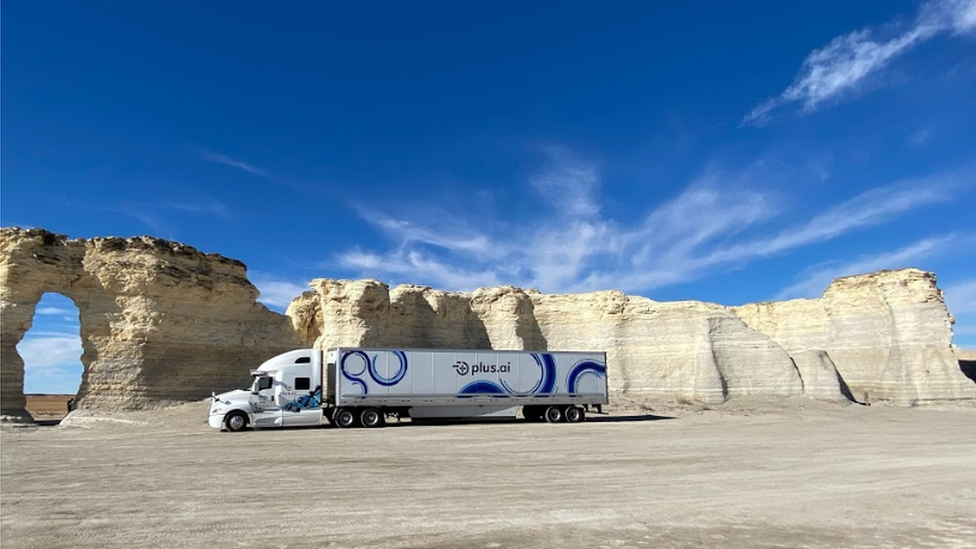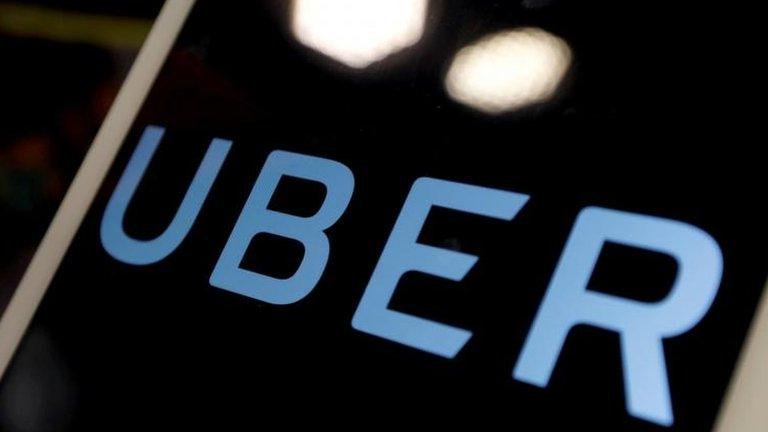Plus.ai's autonomous lorry 'crosses US in three days'
- Published

The Plus.ai lorry relies on sensors, cameras, radar and Lidar (light detection and ranging) technology and computer vision software underpinned by artificial intelligence
A Silicon Valley start-up says it has completed the first commercial coast-to-coast journey across America with an autonomous lorry.
Plus.ai said one of its vehicles had hauled a refrigerator trailer full of butter 2,800 miles from California to Pennsylvania in less than three days.
It relied on sensors, cameras, radar and Lidar (light detection and ranging) technology and computer vision software underpinned by artificial intelligence.
But a driver and engineer rode along.
'Big deal'
"This cross-country freight run... shows the safety, efficiency and maturity of our autonomous trucks, which are already delivering freight for other partners several days a week," said co-founder Shawn Kerrigan.
"Continued advances in our autonomous trucks will make it possible for these quick cross-country runs to be the norm in the future."
Prof David Bailey, of the University of Birmingham Business School, said the journey, from Tulare on the west coast to Quakertown on the east coast, was "quite a big deal".
He added: "While many commentators became excited about driverless technologies over the last few years, interest waned after it was over-hyped.
"But it's important to note that the underlying investment in the new autonomous technologies is still ongoing, evidenced by this Plus.ai self-driving truck run."
Autonomous cars
Daimler and Tesla are also developing self-driving lorries.
But Uber scrapped its research programme last July to focus on autonomous cars instead.
Tom Bruls, of the University of Oxford's Robotics Institute, told BBC News Embark and TuSimple had had similar successes.
Embark, for example, completed a 2,400 mile trip, external across the US last February.
Freight journeys were relatively straightforward as traffic flowed in the same direction at roughly the same speed on highways, Mr Bruls said.
"Only the beginning and end part of the journey (off the highway) have to be done manually for now," he said.
"So I think it is a pretty big market, especially in countries like the US or Australia."
- Published31 July 2018

- Published13 December 2018
